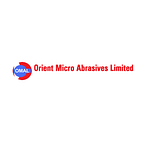Chlorinated Paraffin (CPW) is a versatile and widely used chemical compound in various industrial applications. Its unique properties make it indispensable in industries such as plastics, rubber, paints, and lubricants. In this guest blog, we will delve into the manufacturing process of Chlorinated Paraffin, shedding light on its production, properties, and essential applications.
What is Chlorinated Paraffin (CPW)?
Chlorinated Paraffin, often abbreviated as CPW, is a complex mixture of chlorinated hydrocarbons. It is primarily composed of straight-chain alkanes, ranging from C10 to C30. The degree of chlorination can vary, with chlorine content typically ranging from 30% to 70%. This variability in chlorine content gives rise to different grades of CPW, each suitable for specific applications.
The Manufacturing Process:
The production of Chlorinated Paraffin involves several steps, starting with the selection of raw materials and culminating in the creation of a versatile industrial chemical. Here’s an overview of the manufacturing process:
1. Raw Material Selection:
The key raw material for CPW production is paraffin wax, which is derived from crude oil. Paraffin wax is a white or colorless soft solid, and its properties, such as melting point and molecular weight, can vary depending on the source of crude oil. The choice of paraffin wax grade impacts the final characteristics of the CPW product.
2. Chlorination:
The chlorination process is the heart of CPW manufacturing. Paraffin wax is subjected to chlorination, wherein chlorine gas is introduced into the reaction vessel in the presence of a catalyst, typically iron or aluminum chloride. The temperature and pressure conditions are carefully controlled during this step.
The chlorination process involves the substitution of hydrogen atoms in the paraffin molecules with chlorine atoms. This reaction can be adjusted to achieve the desired level of chlorination, which determines the product’s chlorine content. The range of chlorine content in CPW allows manufacturers to tailor the product to meet specific industrial requirements.
3. Hydrochloric Acid Removal:
After chlorination, the product contains residual hydrochloric acid, which needs to be removed to ensure the final CPW product meets quality standards. This is typically accomplished by washing the chlorinated paraffin with water or a caustic soda solution. This step also helps in neutralizing any unreacted chlorine.
4. Distillation:
To separate different grades of CPW based on their chlorine content, the chlorinated paraffin undergoes fractional distillation. This process separates CPW into fractions with varying chlorine content, allowing for the production of CPW grades tailored to specific industrial applications.
5. Stabilization and Packaging:
The final CPW product is stabilized to prevent further reaction and degradation. Stabilizers such as antioxidants and UV inhibitors are added, ensuring the product’s shelf life and performance over time. Once stabilized, CPW is packaged and prepared for distribution to various industries.
Properties and Applications:
Chlorinated Paraffin exhibits several notable properties that make it indispensable in various industrial applications:
1. Flame Retardant:
One of the primary applications of CPW is as a flame retardant in plastics and rubber. CPW imparts flame resistance to these materials, making them safer for use in applications where fire hazards exist, such as electrical cables, automotive components, and construction materials.
2. Plasticizers:
CPW serves as an excellent plasticizer, enhancing the flexibility and durability of PVC (Polyvinyl Chloride) products. PVC-based products, including vinyl flooring, cables, and artificial leather, benefit from the plasticizing properties of CPW.
3. Lubricants:
In the lubricant industry, CPW is used to improve the lubricating properties of oils. It enhances the viscosity and stability of lubricating oils, making them suitable for high-temperature and high-pressure applications in machinery and automotive engines.
4. Paints and Coatings:
CPW is also employed in the formulation of paints and coatings. It acts as a secondary plasticizer and provides flame-retardant properties, making it a valuable ingredient in architectural paints, industrial coatings, and adhesives.
Conclusion:
Omal Is the Best Chlorinated Paraffin manufacturer in india. Chlorinated Paraffin, with its diverse applications and customizable properties, plays a vital role in numerous industrial sectors. The manufacturing process involves chlorination of paraffin wax, followed by purification and distillation to create various grades of CPW. Its flame-retardant, plasticizing, and lubricating properties make CPW an essential component in many industrial formulations. As industries continue to evolve and demand versatile chemical solutions, Chlorinated Paraffin remains a key player in meeting these diverse needs. Its contribution to safety, durability, and performance across a wide range of applications underscores its significance in today’s industrial landscape.
